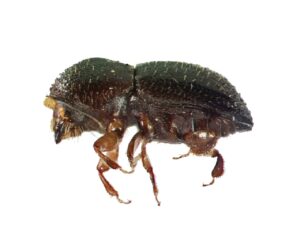We’re all a little more health-conscious these days.
Before the internet, it was easy to just place your trust in the universe, stock up your trolley, and hope that because the food was on the shelf, it was fine for human consumption.
Now we know that sugary stuff isn’t great. In fact, the effects of high sugar on the body are terrifying.
Then there are all the other ingredients on the label – like ‘natural flavours’ or ‘artificial flavours’.
We see those terms everywhere, but most of us have no idea what they mean, so we assume that ‘natural’ trumps ‘artificial’ and is, therefore, the healthier choice.
And, we would be wrong.
Here’s Bon Appetit:
Both natural and artificial flavors are synthesized in laboratories, but artificial flavors come from petroleum and other inedible substances, while “natural flavor” can refer to anything that comes from a spice, fruit or fruit juice, vegetable or vegetable juice, edible yeast, herb, bark, bud, root, leaf—yes, we’re still going—meat, seafood, poultry, eggs, dairy products, or anything fermented from those foods, according to Food and Drug Administration spokesperson Deborah Kotz.
Natural and artificial flavours have the exact same molecules. Nutritionally, there is no difference between them, and both are designed and manufactured by flavourists.
“The flavorist’s job is to understand, on a molecular level, what flavors are made of,” says Dana Gasiorowski, senior flavorist at IFF. She explains that flavorists are also responsible for identifying flavor trends, even traveling on scouting expeditions to discover the next big flavor. She tells me that passionfruit is big right now.
If, for example, you wanted to create a passionfruit flavoured product with actual passionfruit, flavourists would need to use a quarter of the world’s passionfruit supply.
That’s not cost-effective. Instead, the flavor team will look for cheaper sources that mimic the fruit’s molecular fingerprint. They’ll order fresh passionfruit from a supplier and taste it, then identify what they taste using a special lexicon of words (think of the wine wheel). From there, the company’s research and development laboratories identify the molecular fingerprint of the fruit and try to match those compounds to compounds available in the flavor lab.
If you’re keen to avoid all of this chemistry, you need to be more discerning when it comes to those food labels.
Instead of ‘natural flavours’, look out for ‘natural ingredients’ like those found in Sir Fruit’s juices.
If you really want to be safe, drink cold-pressed juices. This is also an easy way to make sure that you’re getting enough fruit and vegetables in your diet.
The Sir Fruit apple, cucumber, spinach, kale and mint juice has a whole range of nutrient-rich veggies and fruits crammed into one serving. There’s no need to introduce any artificial flavours because the carefully selected combination of fruits and veggies come together in a way that tastes great – naturally.
A company obsessed with ‘only the good stuff’, Sir Fruit products taste like a good 100% fruit blend should, because they are made with real whole fruits and contain no artificial flavourants, colourants, or oddities.
Look out for them where superb fruit juice is sold, or visit the Sir Fruit website to browse the range, (which includes smoothies and health shots), and stock up.
What you see is what you get.
And that’s a rare and precious thing in these trying times.
[source:bonappetit]








